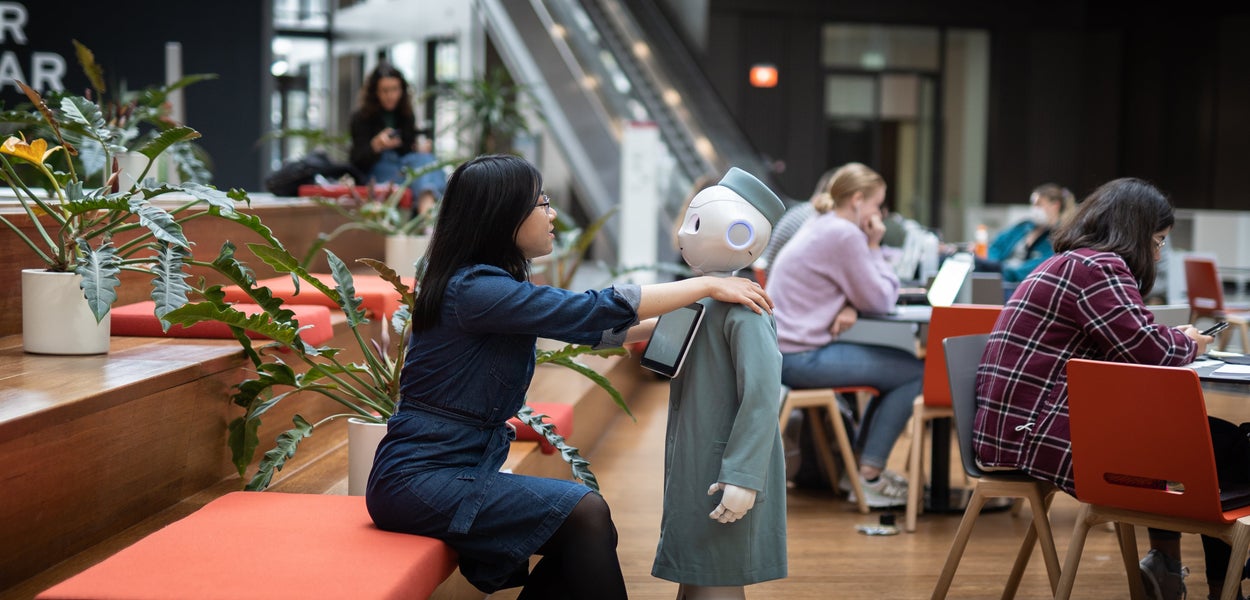Cultural heritage becomes virtual, inclusive and interactive

In this interview, find out how technology, such as virtual reality, is helping to make cultural heritage more accessible and inclusive.
Cultural heritage becomes virtual, inclusive, and interactive
The world is undergoing a digital transformation, and cultural heritage is no exception. Within the project line Interactive Inclusive Heritage, researchers are exploring how new technologies can add value to traditional museums and cultural heritage sites. The focus of the research is currently on the development of a virtual museum exhibition based on HIER. Black in Rembrandt's Time, which was developed and shown at the Rembrandt House in Amsterdam, offering insight into artworks related to people of color in the Netherlands.
This research is part of the Smart Societies impact coalition and brings together experts from various fields. It is led by Jaco van Ossenbruggen and Claudia Libbi on behalf of VU Amsterdam, and Carolien Rieffe, Shenghui Wang and Dirk Heylen on behalf of the UT.
Shaping our values
"Interactive Inclusive Heritage is the proverbial treasure trove for research and the development of new technologies and how they can impact society. Cultural heritage is an indispensable part of society and plays a key role in shaping our values and the way we interact with the world. We must carefully examine how modern technologies can bring about positive change, such as by giving more people equal access to cultural knowledge."
Translating into the virtual world
When visiting a museum exhibition, virtually or in person, you might not immediately think about the ideas the curators had in mind or the messages they want to convey. "When we started collaborating with museum curators, much of our communication was about how the exhibitions should tell a story. And how we could translate their ideas into the virtual world and into a virtual reality (VR) experience."
Cultural biases
Taking advantage of VR meant more than just making it "immersive." "We started exploring how visitors could best move through the virtual space, and whether we could track their eye movements." This turned out to be of interest for two different research lines. In collaboration with psychologists from Utrecht University, the virtual museum became a test environment to study cultural biases among young people regarding diversity and cultural minorities. How could a visit to the exhibition change these biases?
A smart museum guide
There was also interest from computer scientists researching conversational agents like chatbots. They were particularly curious about what eye movements could reveal about visitors' curiosity. "We are currently working on integrating a smart, virtual museum guide that could access the vast amount of information stored in museum databases. It could guide visitors through the exhibition, answer their questions and offer recommendations for other art they may find interesting."
Contributing to education
"If we better understand how to engage children with art and history through interactive exhibitions, we can contribute to the education of a generation. And if we can collect the right data to measure the real impact of an exhibition, we can create better exhibitions in the future. The question of whether and how we should tell different stories to different visitors is also intriguing. To do so, we need to explore the ethics of personalized, intelligent, virtual agents."
We aim to expand our research and collaborations further and are always looking for students, researchers and external collaborators interested in this subject. Please contact our coalition for more information.
Cultural heritage is an indispensable part of society and plays a key role in shaping our values and the way we interact with the world.
